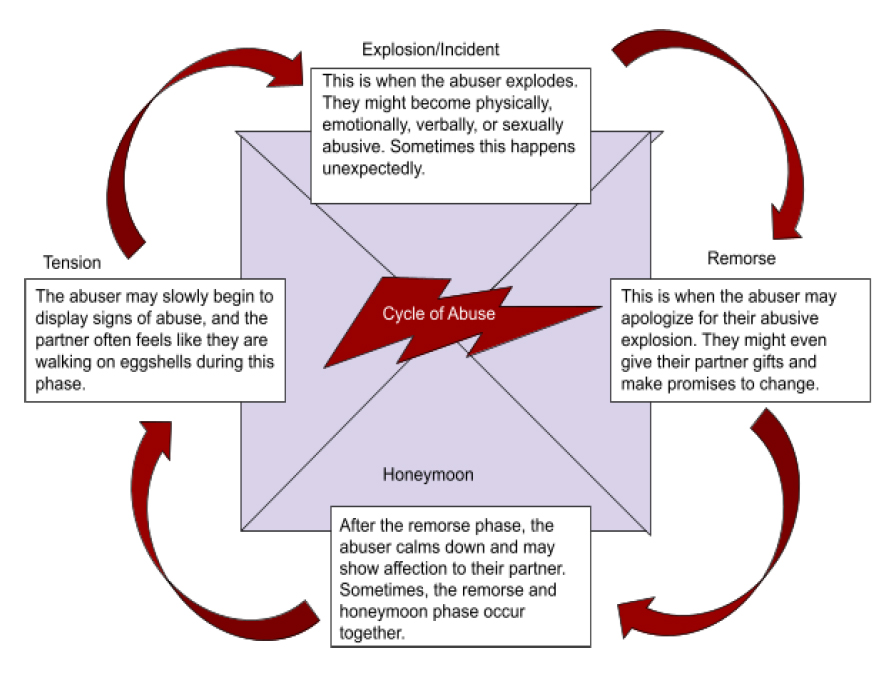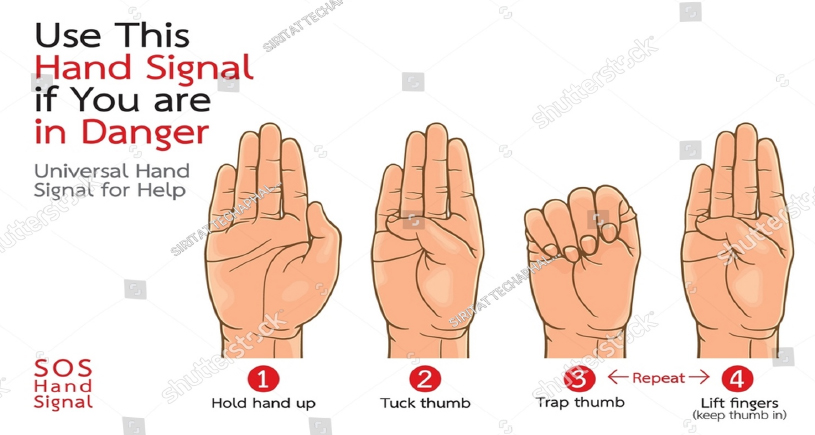If you are in danger, please dial 911 or one of the crisis hotline numbers listed on Crisis Numbers and Shelters at the bottom of the page. Click here: How to Leave an Abusive Relationship for information on escaping when your safety is at risk.
What is Domestic Violence Awareness Month?
Domestic Violence is when a person abuses their partner in a relationship; another term for this is intimate partner violence (IPV). Domestic Violence Awareness Month is a time in October for people to spread awareness. By spreading awareness, people are connected to resources, survivors are empowered, and those who have lost their lives to abuse are remembered. Domestic Violence is not a personal problem but a public problem. Society often normalizes and minimizes abusive behaviors. Over 60 million women have experienced physiological aggression by a partner in their lifetime, and 26% of men have experienced contact sexual violence, stalking, and physical violence by an intimate partner (Preventing Violence, 2022). Intimate partner violence involves behaviors meant to control, manipulate, and instill fear in someone.
Recognizing Intimate Partner Violence
Abusive relationships can be challenging for victims to recognize because of the emotional manipulation tactics abusers use. Intimate partner violence may be easier to comprehend by looking at the cycle of violence. The cycle of violence refers to four repeated patterns of abuse. Below, I have attached an example of the four stages of violence. However, the cycle of violence can look different for everyone.

Intimate Partner Sexual Violence
Eight out of ten rapes are committed by someone known to the victim, and 33% are committed by a spouse, girlfriend, or boyfriend (Rainn, 2023). Sexual violence in a relationship often occurs with many other forms of abuse. Just because someone is in a relationship does not mean a partner cannot rape them. Consent is required regardless of the relationship status. Abusers may use physical force, manipulation, and fear tactics to rape their victims.
Signs of Domestic Abuse
The person being abused might:
- appear fearful
- act extremely apologetic
- wear clothing that does not match with the season to hide bruises
- begin isolating oneself
- act highly anxious to please their partner
- minimize their abuser’s behaviors
- have Increased anxiety or depression
- withdraw from events
- have behavior changes
The domestic abuser might:
- appear sincere
- show signs of extreme jealousy
- isolate victims from loved ones
- prevent a partner from making their own decisions
- control finances
- pressure you into doing something you do not want to
- pressure partner into sex
- intimidate partner
These are examples some victims may display or abusers might use, but not all. Sometimes the abuse is very well hidden. Everyone reacts to abuse differently, and sometimes, it can be hard to tell if someone is being abused, which is why checking in with loved ones can help.
What are some ways I can leave an abusive relationship?
- You can create a safety plan; this can look different for everyone depending on your situation. If you are unsure how to create a safety plan, contact a domestic violence advocate who can help you create one. At the end of this page, under “Additional Resources” there are safety shelters with crisis numbers listed.
- A great start to creating a safety plan is to identify safe people, which are people you can trust when leaving an abusive relationship.
- If you feel comfortable, contact your local police department after or before fleeing. Suppose you think it is nearly impossible to leave without your partner knowing. In that case, you can call your local police department to tell them you are trying to leave an abusive relationship and that you would like them to escort you out of the house safely. If an arrest is to be made, it could take a while for police to make the arrest. If possible, ensure your partner does not know where you are relocating.
- If you are a victim trying to escape but may not have access to a phone or computer when fleeing, then you might want to go straight to your neighbor and ask them to dial the police or a safe person. Write down these numbers if possible.
The distress hand signal is a hand signal that indicates the need for rescue. Remembering this signal and teaching others can save a life.

Written by: Hallie Doherty, Intern
September 29th
Additional Resources (Crisis numbers and Shelters)
Shelters
Listed below are a few shelters in the Lake County, Cook County, and Mchenry County areas. You can also click on the link: www.domesticshelters.org – to quickly find a shelter in your area
A Safe Place https://asafeplaceforhelp.org/programs-services/emergency-shelter/
Location: Waukegan and Zion
24-Hour Helpline (847) 249-4450
Lake Co. Haven https://lakecountyhaven.org/
Location: Libertyville
Does not have a 24/7 support line
Staben House https://www.waukegantownship.com/176/Staben-House
Location: Waukegan
Does not have a 24/7 support line
Turning Point
Location: Woodstock https://turnpt.org/
24-Hour Helpline (815) 338-8081
Mary Lou’s Place https://www.ywca-ens.org/mary-lous-place/
Location: Evantson
24-Hour Helpline (877) 718-1868
_______________________
Perpetrators of sexual violence: Statistics. RAINN. (n.d.).
https://www.rainn.org/statistics/perpetrators-sexual-violence
Centers for Disease Control and Prevention. (2022, October 11). Fast facts: Preventing intimate partner violence |violence prevention | injury Center | CDC. Centers for Disease
Control and Prevention. https://www.cdc.gov/violenceprevention/intimatepartnerviolence/fastfact.html

